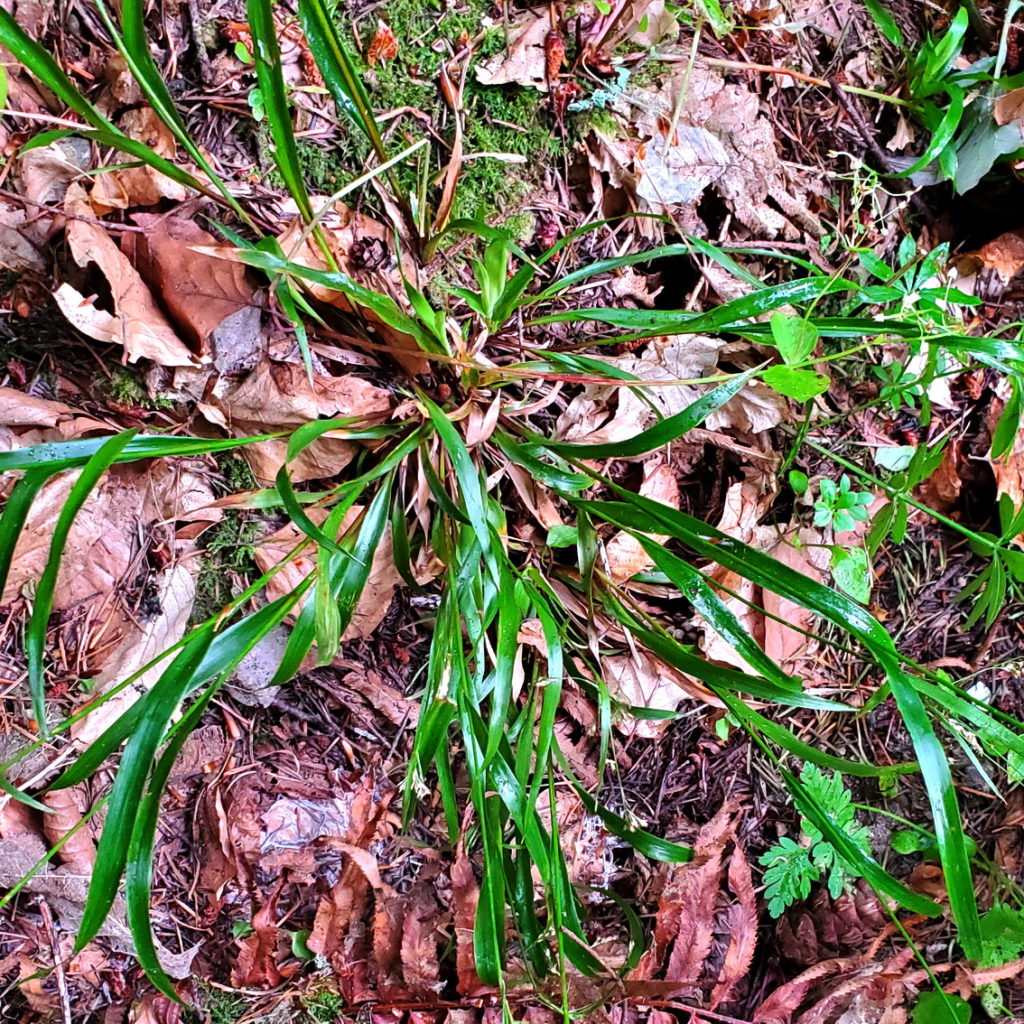How do we keep invasive grasses out of our backyard forests? How do we avoid removing indigenous grasses? I don’t think there are easy answers to either of these questions, but I have a few ideas and a confession.
My Basic Strategy is Also a Confession
I confess that I routinely try to remove any grass that I find growing under the canopy of the forest, especially solitary plants that have presumably sprouted from seed and that are fairly easy to remove without disturbing too much soil. Grass that spreads by rhizomes creating dense mats is much harder to remove and more difficult to control once it has taken over an area. For that type of grass, I simply try to prevent spreading by mowing or weed-whacking to minimize seed production and hand weeding around the perimeter to create a Bradley Line.
My Reservations
I know that by indiscriminately removing grass, I might be inadvertently taking out one of our region’s indigenous grasses (see below), and I admit to being troubled by this. However, I’m simply very reluctant to let grass spread in the forest because of the proliferation and dominance of introduced, aggressive grasses or the highly invasive Reed Canarygrass. (According to Jacobson and Pojar/Mackinnon, Reed Canarygrass was likely indigenous to some areas of Washington State, but human influence has caused it to spread so aggressively that it has been classified as a Class C noxious weed.)

The Search for PNW Native Grasses
I recently came across some narrow-leaved grass, growing in tufts on a dry slope beneath Douglas Firs, that I left in place in hopes that it might be indigenous. In his book Wild Plants of Seattle, Jacobson describes about 45 grass species growing in the greater Seattle area of which only seven are native. I wondered if it might be one of those seven. Because of its location, I ruled out the wet-loving Rice Cutgrass and Tall Manna Grass, and since it was not growing on a sandy shore, I ruled out Seashore Salt Grass. It lacked the small, basal bulb of Alaska Onion Grass and its narrow leaves ruled out Nodding Trisetum and Blue Wild Rye. Of Jacobson’s seven indigenous grasses, that left only Red Fescue which has narrow leaves and was thus a possibility. But, alas, Red Fescue is not shade tolerant, so my search for native grasses continues.
Small-flowered Wood Rush (Luzula parviflora)
There is, however, a native rush that is fairly common where I work in Everett’s Forest Park which can be mistaken for grass. The Small-flowered Wood Rush (Luzula parviflora) looks like an attractive clump of green grass but is actually an attractive rush that shows no signs of being invasive. It’s a good one to be alert for as you work in your own backyard forest.

